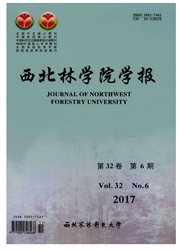

 中文摘要:
中文摘要:
边际机会成本理论能从经济角度对资源利用的生产者的生产成本和因自然资源利用对他人、社会、环境造成的损失进行抽象和度量。反映了自然资源效用和稀缺程度变化对资源价格的影响,考虑了代际公平性,符合可持续发展的思想,为森林环境资源定价研究提供了直接的理论与方法基础,应用边际机会成本理论开展森林环境资源的定价对促进森林环境保护有深远的意义。在边际机会成本理论深入分析基础上,结合森林环境资源的特点,提出了基于该理论的具体边际生产者成本、边际使用成本、边际环境成本的定价模型,为开展森林环境资源定价工作提供了新思路和价格的具体测度方法。
 英文摘要:
英文摘要:
The theory of marginal opportunity cost(MOC) can Abstract and measure the production cost and the losses caused to others,society and environment during the process of utilizing natural resources by the user.It reflects the impact of utility and scarcity of natural resources on resource prices.It takes into account the intergenerational equity.It is consistent with the idea of sustainable development.It provides direct theories and methods for the study of the prices of forest environmental resources.It has far-reaching significance to the promotion of environmental protection of forests when MOC is applied to price forest environmental resources.This paper proposed a specific pricing model for the marginal producer cost(MPC),marginal use cost(MUC) and marginal environmental cost(a substitution for marginal external cost,MEC) by analyzing the theory of marginal opportunity cost and combined with the characteristics of the resources of the forest environment.It provided a new idea for forest environmental resource pricing and the specific measures.
 同期刊论文项目
同期刊论文项目
 同项目期刊论文
同项目期刊论文
 期刊信息
期刊信息
